The Medieval Movement of Holy Women That Shaped Belgian Cities
The devout, wandering mystics were consigned to beguinages, which are now prime tourist spots.
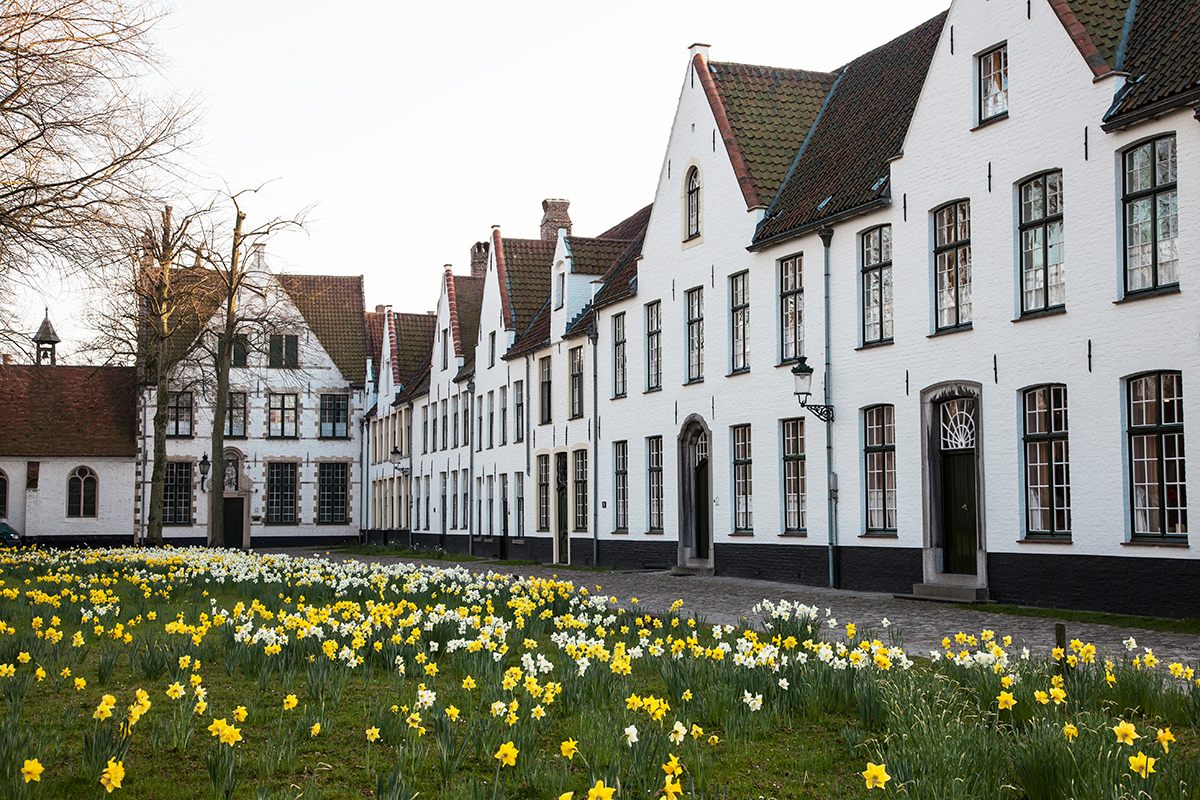
On June 1, 1310, a woman named Marguerite Porète was burned at the stake in Paris after she had refused to retract her book, The Mirror Of The Simple Souls. She was a particular kind of woman, devout to the point of fanaticism, and her book about Christian mysticism regarded as heretical by the Church.
“Marguerite Porète is a very interesting case,” says Walter Simons of Dartmouth College. “She made the mistake of wanting to make a point of her heresy. And that suited a lot of people quite well.”
Both the Church, who at the beginning of the 14th century was becoming increasingly worried about heretical movements, and the French crown saw in Porète an easy target, an unmarried, wandering mystic. It didn’t help that she was a member of a mysterious, distrusted, poorly-understood religious movement—the beguines.

Beguines were a religious movement of women who weren’t wives but also weren’t fully ordained in a religious order. There is a long history of Christian mystics, and they occupied a twilight zone in which they could move between the secular and religious worlds. They didn’t need to bear the burden of married life, but also weren’t forced to seclude themselves as nuns did, leading active and economically useful lives as single women.
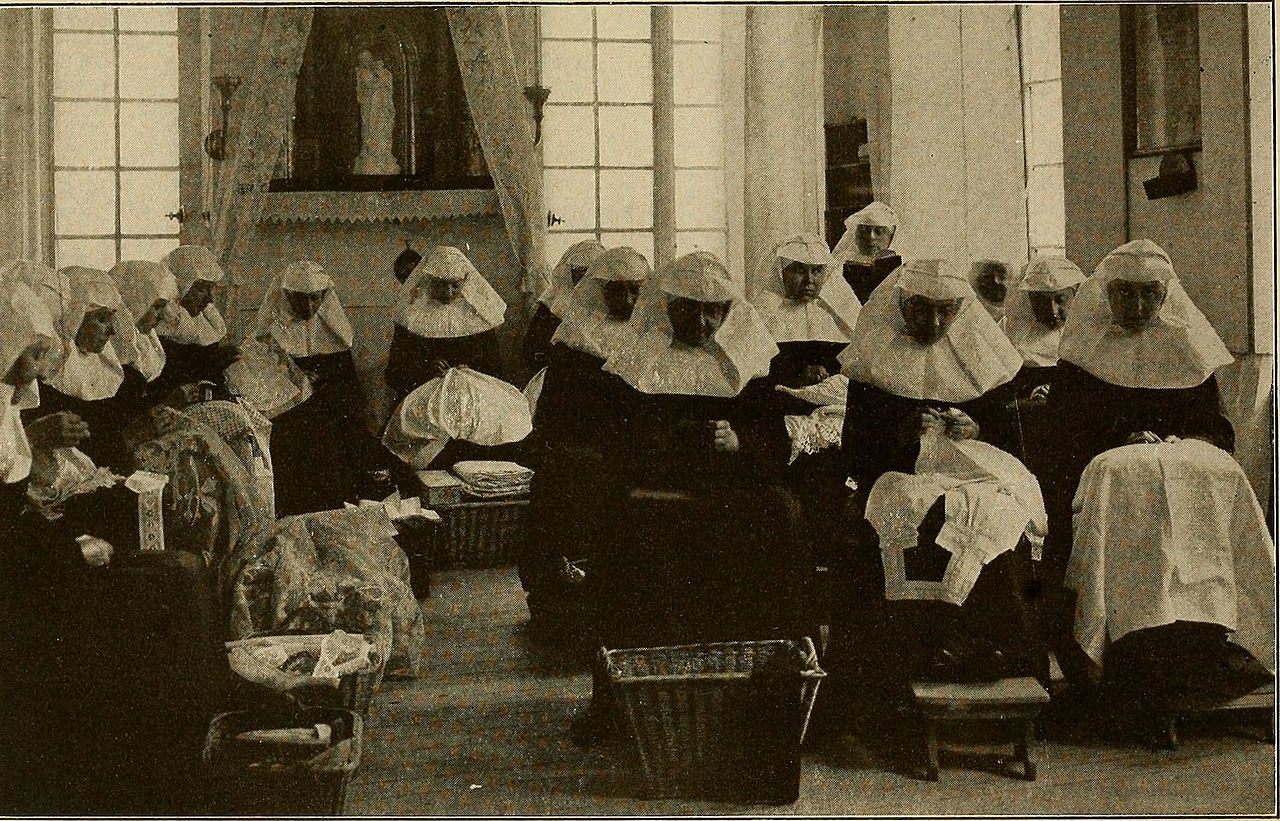
The movement founds its origin in 12th century when mulieres religiosae, holy women, began grouping together in cities of present day Belgium, the Netherlands, Germany and Northern France. Here they lived in voluntary poverty and preached sexual abstinence, while living lives in the service of the poor and marginalized. One such holy woman, the 23-year old widow Juetta of Huy, left her family in the city of Liege around 1181 to serve lepers. She then spent the last 36-years of her life immured as an anchorite.
Around 1230 these holy women had started to be called “beguines”, a term that was most likely initially used pejoratively, but whose original meaning is lost to history. Some of these communities formed separate, walled communities called beguinages, located just outside the city walls. The biggest beguinages housed thousands of single women, a remarkable feat in medieval Europe. (Beguinages, now empty of beguines, still exist in most Belgian and Dutch cities, where their medieval houses, tight alleyways and bleached walls make them prime tourist destinations.)
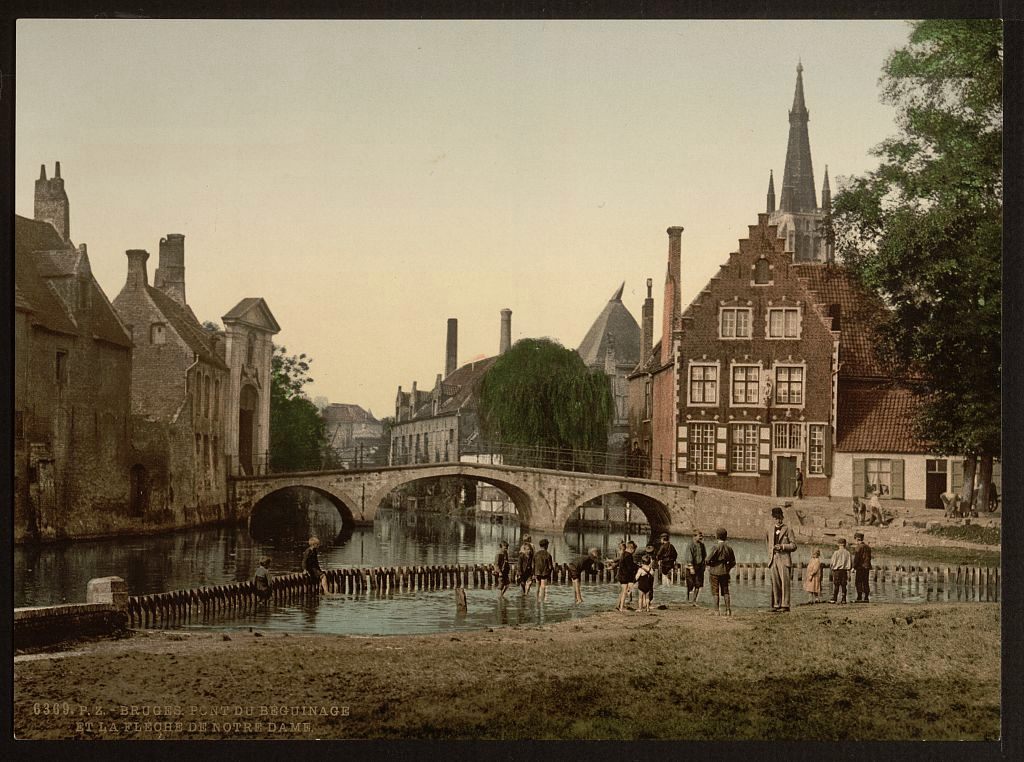
Originally these separate living quarters were at least partly imposed on the beguines because male clerics feared the exposure of these single women to harmful city influences. In the 1245 charter for the creation of a beguinage in Tongeren a local priest warned:
“On high feasts they [the beguines] find themselves submerged by crowds of the populace in the main church of Tongeren, where they might eagerly observe these people while being dangerously exposed to them.”
The beguines abhorred what they considered usury. Early beguine Mary of Oignies was so shocked by the vice and greed she saw in the streets of Nivelles she mutilated her own feet because they brought her there. Beguines did, however, admire manual labor. Many entered the textile industry, for which the medieval low countries were a major center.
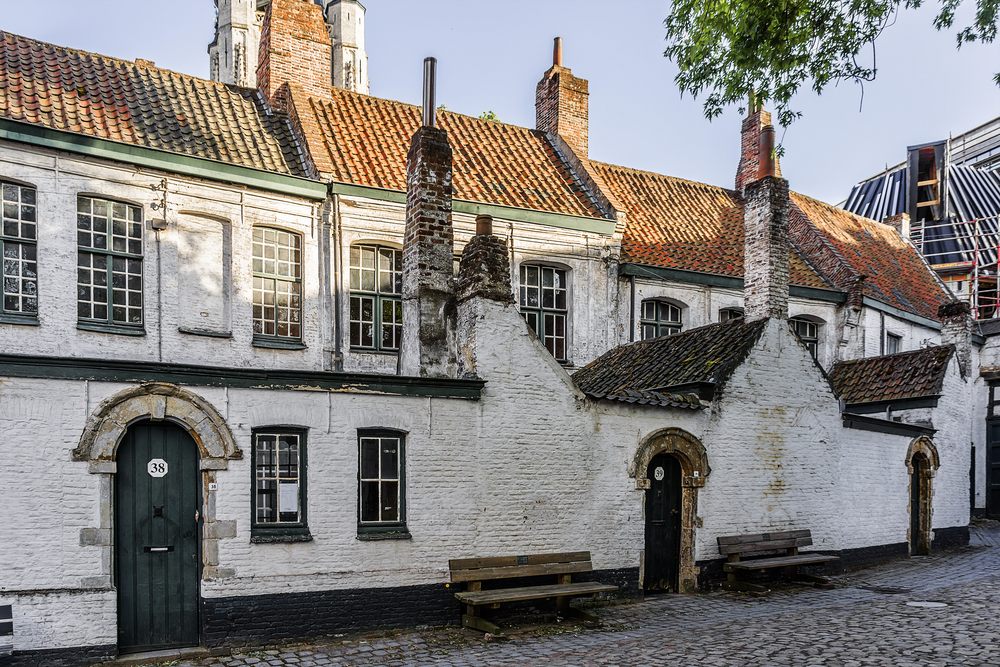
Beguines didn’t take vows as nuns do, but they did place strong emphasis on sexual abstinence. Many beguines were, however, not virgins, and had been married before and chose to live in beguinages only later in life. Mothers and daughters even joined the movement together.
Often beguines were upper-class, Juetta of Huy, Mary of Oignies and Marguerite Porète probably all hailed from families of nobles or urban merchants. In the case of Porète this adds an extra layer of mystery to her eventual burning at the stake. “I don’t understand why her family, that was most likely quite wealthy, didn’t intervene in her case,” says Simons.
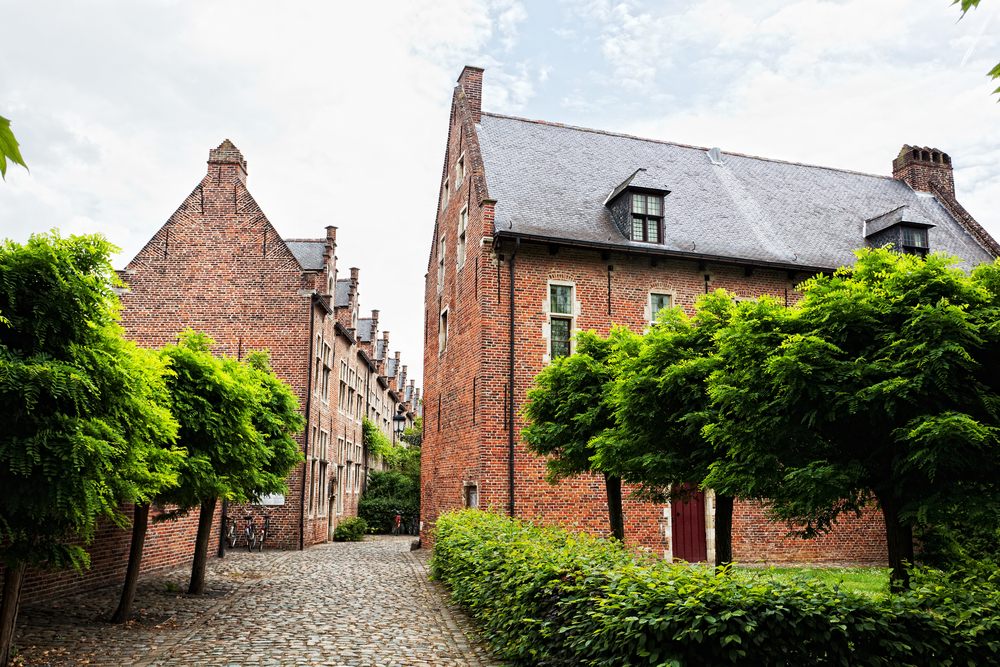
A section of the clergy had distrusted the beguines from the start. The Church, however, only began condemning the beguines wholesale in the wake of the burning of Marguerite Porète in 1310. As a result, beguinages were closed throughout Northern-France and Western-Germany. In present-day Belgium and the Netherlands, women faced limitations on their lifestyle: No longer were wandering, preaching beguines, such as Marguerite Porète, tolerated, and their freedom of movement was more and more limited to the beguinages.
“The prevalent image of the beguine in this later age was no longer controversial or defiant, but rather that of a naïve, somewhat foolish but inoffensive kwezel [excessively pious woman],” writes Simons in his book Cities Of Ladies. In an interview with Atlas, he adds that it’s difficult to place the deeply religious figures in a contemporary context. “I wouldn’t call the early beguines rebellious, because they didn’t rebel,” he says. “But at least they were independent and free-minded in the early period.”
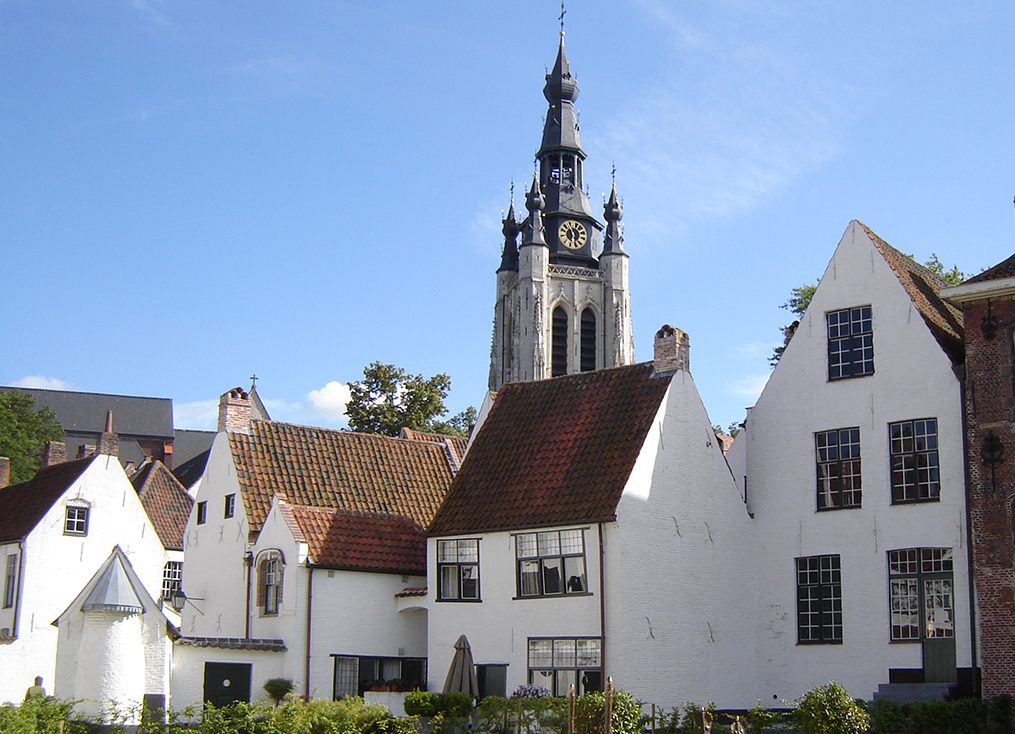
This persecution coincides with the crisis of the 14th century, that in many ways, represents a breaking point for medieval society. Medieval elites, worried about growing unrest and economic crisis, clamped down on dissent. “This is a time of persecution for not only the beguines, but also for Jews, heretics and the poor,” says Simons, “Society became more intolerant.”
The reformation proved equally tortuous for the beguines. Many beguinages were destroyed or abandoned and the order was hampered severely in the Protestant north, the present-day Netherlands. In the Catholic south, present-day Belgium, the beguines rebuilt their convents. The movement would never again reach the prominence it had during the Middle Ages, although it did experience periodic flare-ups.
The last beguine Marcella Pattyn died in 2013, and with her the movement that lasted hundreds of years. What remains is the clear material imprint they left on Belgian and Dutch cities. The beguinages where they lived and prayed have become centers of tourism, and oases of peace in the heart of bustling cities.





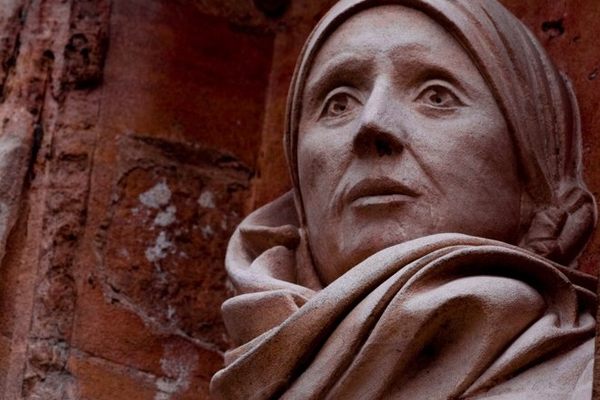

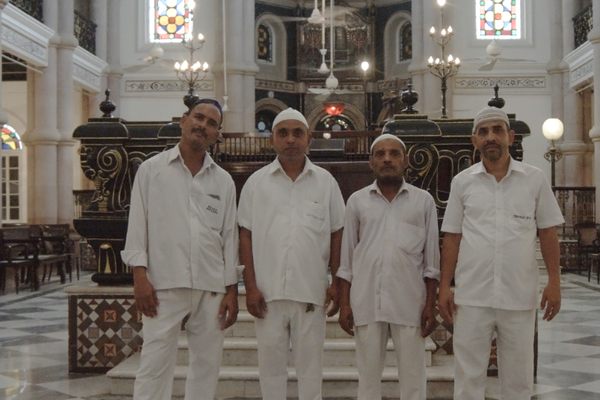





Follow us on Twitter to get the latest on the world's hidden wonders.
Like us on Facebook to get the latest on the world's hidden wonders.
Follow us on Twitter Like us on Facebook